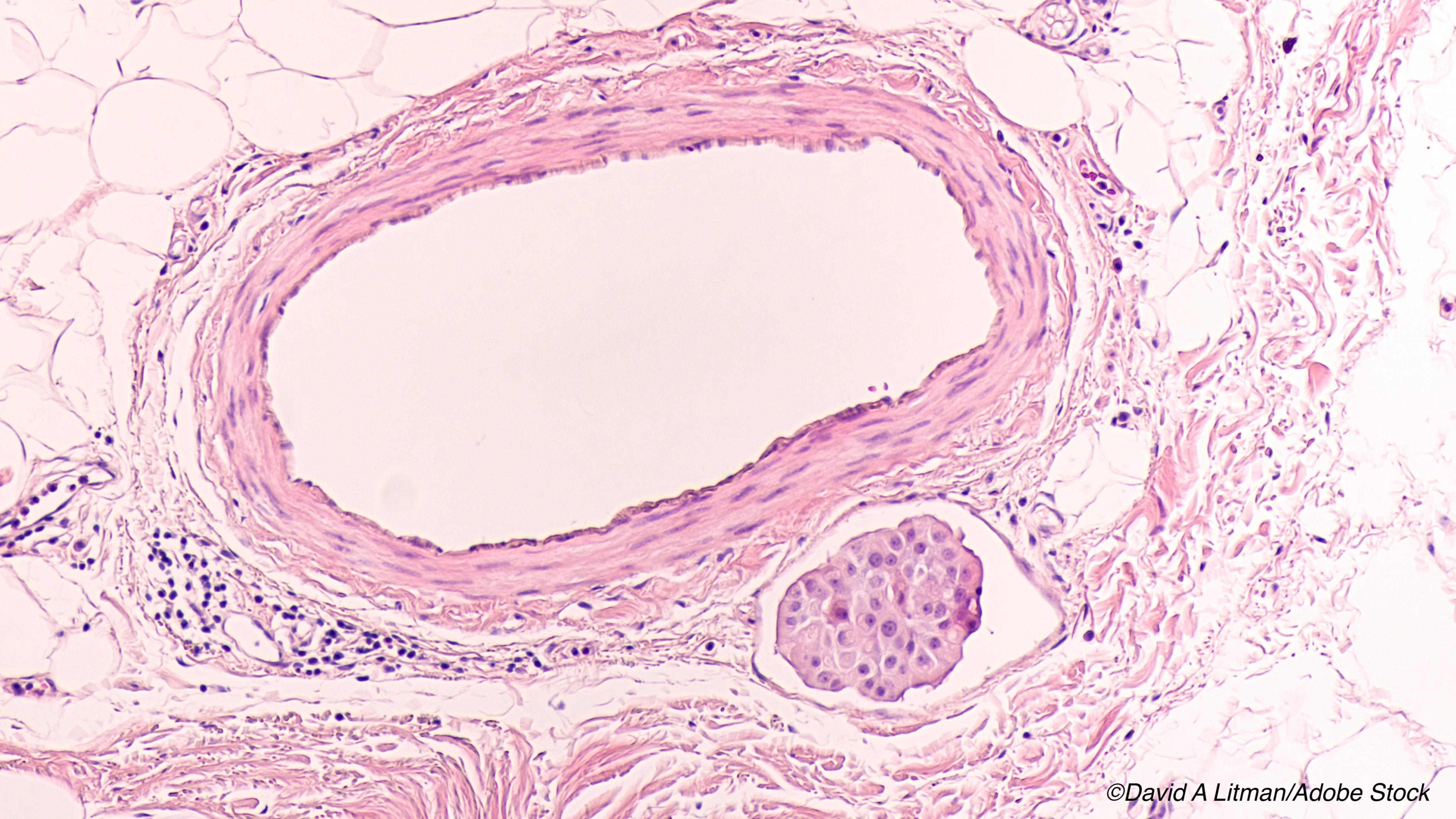
A review of cancer registries suggests that breast cancer patients with distant lymph node metastases (DLNM) may benefit from locoregional therapies.
The review of Surveillance, Epidemiology and End Results (SEER) registries, which was published in JAMA Network Open, found that DLNM patients had similar overall and breast cancer-specific survival (BCSS) as women with less advanced, stage IIIC (N3) ipsilateral supraclavicular lymph node metastases (ISLM).
In a cohort of 2,033 women diagnosed with breast cancer between January 2010 and December 2014, BCSS rates at three years were 64.5% for DLNM patients, 63.2% for ISLM patients, and only 41.2% for patients with stage IV distant metastases, DLNM excluded, wrote senior author Wenbin Zhou, MD, PhD, The First Affiliated Hospital with Nanjing Medical University, Nanjing, China, and colleagues.
At three years, 62.6% of DLNM patients were still alive as were 53.4% of ISLM patients compared with only 38.2% of those with distant metastases (DLNM excluded).
Moreover, among the 346 patients with DLNM in the study, primary surgery improved BCSS by 78% at a Hazard Ratio (HR) of 0.22 (95% CI, 0.13-0.39; P<0.001) and overall survival (OS) by 73% (HR 0.27; 95% CI, 0.18-0.42; P<0.001), although surgery for distant lymph nodes did not significantly affect either endpoint.
Radiotherapy similarly improved BCSS by 68% (HR 0.32; 95% CI, 0.18-0.59; P<0.001) and OS by 61% (HR 0.39; 95% CI, 0.24-0.64; P<0.001).
“DLNM, including to cervical, contralateral axillary or internal mammary, transverse cervical and other nodes, are still considered to be stage IV disease,” they wrote. “In the present cohort study, we found that patients with DLNM showed comparable survival [to] patients who had ISLM in any subtype [so p]atients with DLNM may have a curable disease… and this disease may be classified as an N3 disease, not a stage IV disease.”
Of the 2033 women analyzed for the study, the mean age was 62 years (range, 23-99 years) among whom 17% had DLNM, 10.4% had ISLM and 72.6% had distant metastases — DLNM excluded.
At a median follow-up of 27 months, the median survival was not reached until the end of follow-up for patients with DLNM compared with a median survival of 45 months (range, 0-59 months) for ISLM patients and 24 months (range 0-59 months) for patients with distant metastasis.
An analysis in which BCSS and OS were compared between different subgroups including patients older and younger than the age of 50 years, White versus Black patients, patients diagnosed with invasive ductal carcinoma or invasive lobular carcinoma or other types, those with well to moderately differentiated or poorly differentiated to undifferentiated tumors as well those with different molecular subtypes showed BCSS and OS rate that were similar between DLNM patients and those with ISLM, investigators noted.
In contrast, BCSS was almost twice as poor among patients with distant metastases (HR 1.99; 95% CI, 1.43-2.78; P<0.001) as was OS (HR 1.79; 95% CI, 1.35-2.38; P<0.001) compared to the other two groups.
Slightly over half (55.8%) of DLNM patients received surgery for the primary tumor, 15% underwent surgery for distant lymph nodes and slightly over one-third at 36.7% received radiotherapy.
In an adjusted analysis, primary surgery improved BCSS by 83% (HR 0.17; 95% CI, 0.08-0.38; P<0.001) as well as OS by a 79% (HR 0.21; 95% CI, 0.12-0.39; P<0.001), study authors noted.
Radiotherapy again resulted in a significant 52% improvement in BCSS (HR 0.48; 95% CI, 0.22-1.05; P=0.07), but it did not significantly improve OS in this subgroup analysis.
The fact that surgery for the primary tumor improved survival in all molecular subtypes of DLNM patients in the current study, and that radiotherapy also improved survival in some molecular subtypes, suggests that aggressive radical locoregional therapy should be considered for DLNM patients, the authors recommended.
Commenting on the findings, Yutian Zou, MD, Sun Yat-sen University Cancer Center, Guangzhou, People’s Republic of China, and colleagues pointed out that whether primary tumor resection should be done on patients with breast cancer and distant metastases has long been debated.
In their own meta-analysis, primary tumor resection was associated with a 35% improved OS among patients with stage IV breast cancer (HR 0.65; 95% CI, 0.61-0.70; P<0.001), although surgery appeared to benefit only those with one metastatic site and bone-only metastasis.
Limitations to the review by Zhou et al’s study include an “inevitable” selection bias given the differences in baseline characteristics among the three treatment cohorts. Furthermore, specific chemotherapy regimens and the dose of radiotherapy used are not available from the SEER database, so the authors could not compare various treatment regimens.
“[T]his study [also] only analyzed samples from the SEER database, which lacks data of other ethnic populations,” the editorialists pointed out.
Given that Chinese patients account for only about 12% of all newly diagnosed breast cancers in the world, “it is important to include the Chinese population and other major populations for determining the prognosis of DLNM breast cancer,” Zou and colleagues cautioned.
Lastly, the median follow-up in the study was short at only 27 months which could affect final survival outcomes, as they also pointed out. The editorialists thus called for more multicenter, randomized clinical trials with adequate follow-up to further validate the current study’s findings.
-
Patients with distant lymph node metastases, until now thought of as stage IV breast cancer, had similar overall and breast cancer-specific survival odds as those with stage IIIC disease with ipsilateral supraclavicular lymph node metastases.
-
Distant lymph node metastases in breast cancer patients may now be thought of as a regional disease and as such, locoregional therapies including primary surgery and radiation could be recommended.
Pam Harrison, Contributing Writer, BreakingMED™
The study was funded in part by the National Natural Science Foundation of China.
None of the authors or editorialists reported any disclosures.
Cat ID: 22
Topic ID: 78,22,730,22,691,192,925,159


